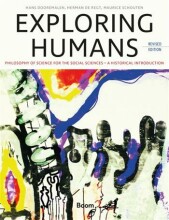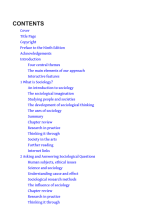Summary: Arts And Culture: Pearson New International Edition An Introduction To The Humanities | 9781292051925 | Janetta Rebold Benton, et al
- This + 400k other summaries
- A unique study and practice tool
- Never study anything twice again
- Get the grades you hope for
- 100% sure, 100% understanding
Read the summary and the most important questions on Arts and Culture: Pearson New International Edition An Introduction to the Humanities | 9781292051925 | Janetta Rebold Benton; Robert DiYanni
-
1 Renaissance and Mannerism in Italy
-
1.1 Early Renaissance
This is a preview. There are 1 more flashcards available for chapter 1.1
Show more cards here -
The transition from Middle Ages to the Renaissance was gradual. Intense Religiosity persisted, but came to coexist with (name 2):
- A more worldly philosophy.
- A more secular outlook.
- A more worldly philosophy.
-
Which broad changes were developed during the Renaissance?(name 4).
- The development of Nation States.
- Advent of commercial capitalism.
- Emergence of the middle class.
- Rise of Rationalists thoughts.
- The development of Nation States.
-
What were the most important scientific and technological developments of the Renaissance?
- Developments in navigation abetted to European explorations of the Americas and Asia.
- Invention of the movable type allowed for printing and expanding of the world learning.
- Developments in navigation abetted to European explorations of the Americas and Asia.
-
What does the term "classical humanism" entail?
Classical learning based on writings of the Greeks & Romans in Europe.
Happened during the Renaissance and started first in Italy. -
1.1.1 The Medicis' Florence
This is a preview. There are 2 more flashcards available for chapter 1.1.1
Show more cards here -
What was the role of Florence in the renaissance.
- In the beginning of the Renaissance Florence had become the center of trade in Europe.
- Originally ruled by its guilds, Florence' rule was seized by the Medici family half 15th century
-
Who was Cosimo de' Medici?
- Cosimo de' Medici (1389-1464) was the head of the Medici family during the Early Renaissance.
- Son of Giovanni Di Bicci de Medici, who laid the foundation of the Medicis' wealth.
- "He is king in everything but name" - Pope Pius II (1458).
- Opened a public library in Florence with classical literature.
- Was obsessed with Plato and Aristotle.
- Employed virtually every major Italian artist, architect, writer, philosopher and scholar of the day.
- Under his rule Florence grew in wealth and increased sophistication of its citizenery which resulted in an atmosphere where arts could thrive
- Cosimo de' Medici (1389-1464) was the head of the Medici family during the Early Renaissance.
-
Who was Lorenzo the Magnificent?
- Lorenzo de Medici (1449-1492) was the grandson of Cosimo and the family head who could realize Florence's dream of reaching the heights of the golden age of Athens.
- Nicknamed 'Lorenzo the Magnificent'.
- Leading poet of the day and musician.
- Didn't like paintings as much as gemstones, where he invested most in.
- Spend so much money on art and gemstones that brought the Medici bank in financial peril at the end of his rule.
-
The humanists Cosimo and Lorenzo de Medici worked hard to make Florence the humanist center of the world. How did they accomplish this?
They returned to the culture of the classical antiquity, that was seen by humanists as the "golden wisdom" (Petrarch). -
1.1.2 The Humanist Spirit
This is a preview. There are 1 more flashcards available for chapter 1.1.2
Show more cards here -
Although humanists believed that the responsibility of one's actions lies solely in the hands of the human himself, it doesn't mean that humanists rejected God. Can you explain?
Humanists believed that if you do the right things you could move to the divine (heaven). -
1.1.3 Platonic Academy of Philosophy
This is a preview. There are 1 more flashcards available for chapter 1.1.3
Show more cards here -
What was the Platonic Academy of Philosophy?
- The Platonic Academy of Philosophy was a university in Florence ,that was the center of humanists study.
- Founded by Cosimo de' Medici, and supported by his grandson Lorenzo.
- The Academy's philosophy was that of Neoplatonism.
- The Platonic Academy of Philosophy was a university in Florence ,that was the center of humanists study.
- Higher grades + faster learning
- Never study anything twice
- 100% sure, 100% understanding
Topics related to Summary: Arts And Culture: Pearson New International Edition An Introduction To The Humanities
-
Renaissance and Mannerism in Italy - Early Renaissance - Platonic Academy of Philosophy
-
Renaissance and Mannerism in Italy - Early Renaissance - Architecture
-
Renaissance and Mannerism in Italy - Early Renaissance - Sculpture
-
Renaissance and Mannerism in Italy - Early Renaissance - Painting
-
Early Renaissance - Early Renaissance Music - Motets
-
Early Renaissance - Early Renaissance Music - Word Painting
-
Renaissance and Mannerism in Italy - High Renaissance
-
Renaissance in Northern Europe - Early Renaissance in Northern Europe
-
Renaissance in Northern Europe - High Renaissance in Northern Europe
-
Baroque Age - Baroque in Italy - The Counter-Reformation in Rome
-
Baroque Age - Baroque in Italy - Thirty Years' War
-
Baroque in Italy - Architecture and Sculpture in Rome - Gianlorenzo Bernini
-
Baroque Age - Baroque in Italy - Painting in Italy
-
Baroque Age - Baroque in Italy - Music in Italy
-
Baroque Age - Baroque Outside Italy - Painting in Holland
-
Baroque Age - Baroque Outside Italy - Painting in Flanders
-
Baroque Outside Italy - Painting in France - NOT TO KNOW Louise Moillon
-
Baroque Outside Italy - Painting in France - The French Academy
-
Baroque Age - Baroque Outside Italy - The Science of Observation
-
Baroque Age - Baroque Outside Italy - Philosophy
-
Baroque Age - Baroque Outside Italy - Literature
-
Revolutions - The American Revolution - Enlightenment Thought and Women
-
Eighteenth Century - Revolutions - The French Revolution
-
Revolutions - Scientific Revolution - Enis Diderot and Carolus Linnaeus
-
Eighteenth Century - Rococo - French Painting
-
Eighteenth Century - Literature of Rationalism
-
Eighteenth Century - Neoclassicism
-
Romanticism and Realism - Romanticism - Painting
-
Romanticism and Realism - Romanticism - The July Monarchy
-
Romanticism and Realism - Romanticism - Philosophy
-
Romanticism and Realism - Romanticism - The Antislavery Movement
-
Romanticism and Realism - Romanticism - The Civil War
-
Romanticism and Realism - Romanticism - Literature
-
Realism - French Painting - Edoard Manet
-
Romanticism and Realism - Realism - The Rise of Photography
-
Romanticism and Realism - Realism - Literature
-
Romanticism and Realism - Realism - Russian Literature
-
Impressionism and Post-Impressionism - Impressionism - Painting
-
Impressionism and Post-Impressionism - Impressionism - Literature
-
Impressionism and Post-Impressionism - Post Impressionism
-
20th century Modernism
-
Exam Recap - Time Periods - Baroque Age
-
Time Periods - Early Twentieth Century - Modernism
































